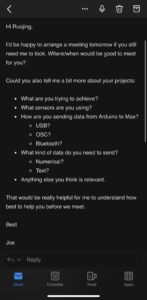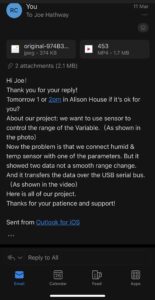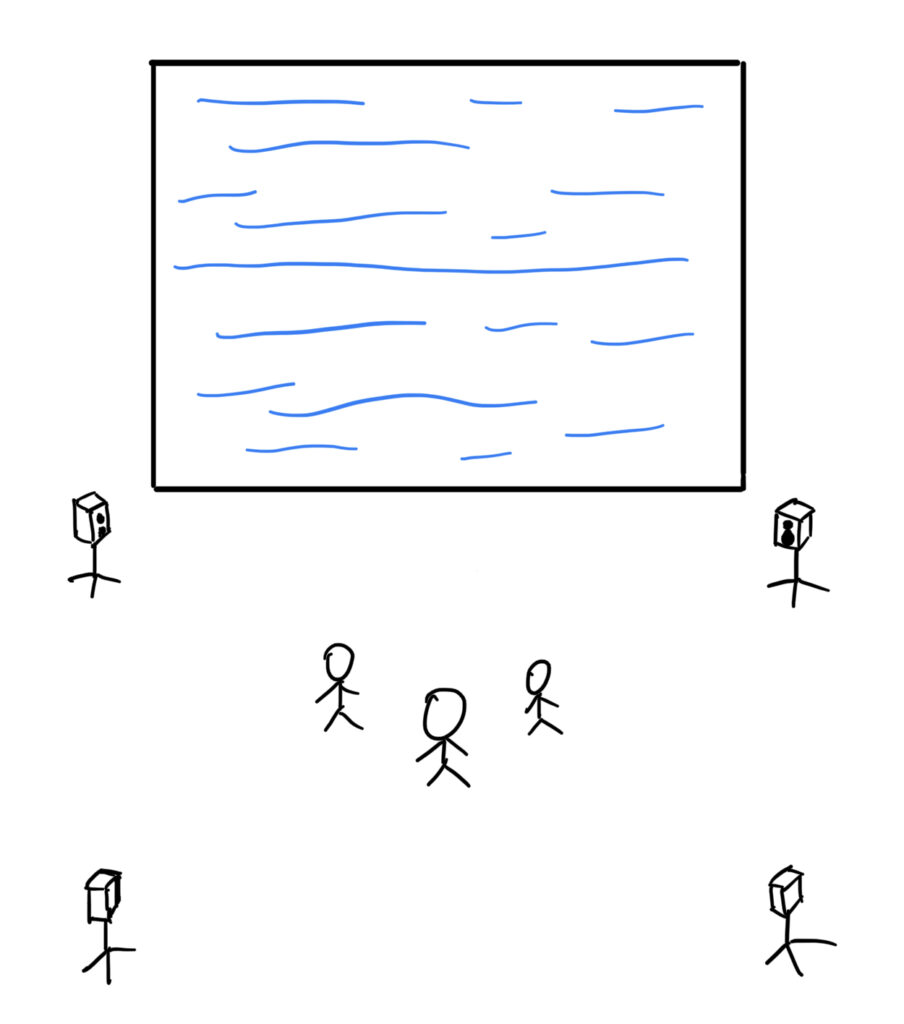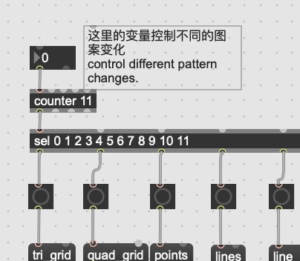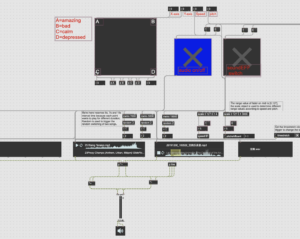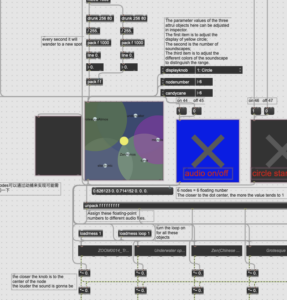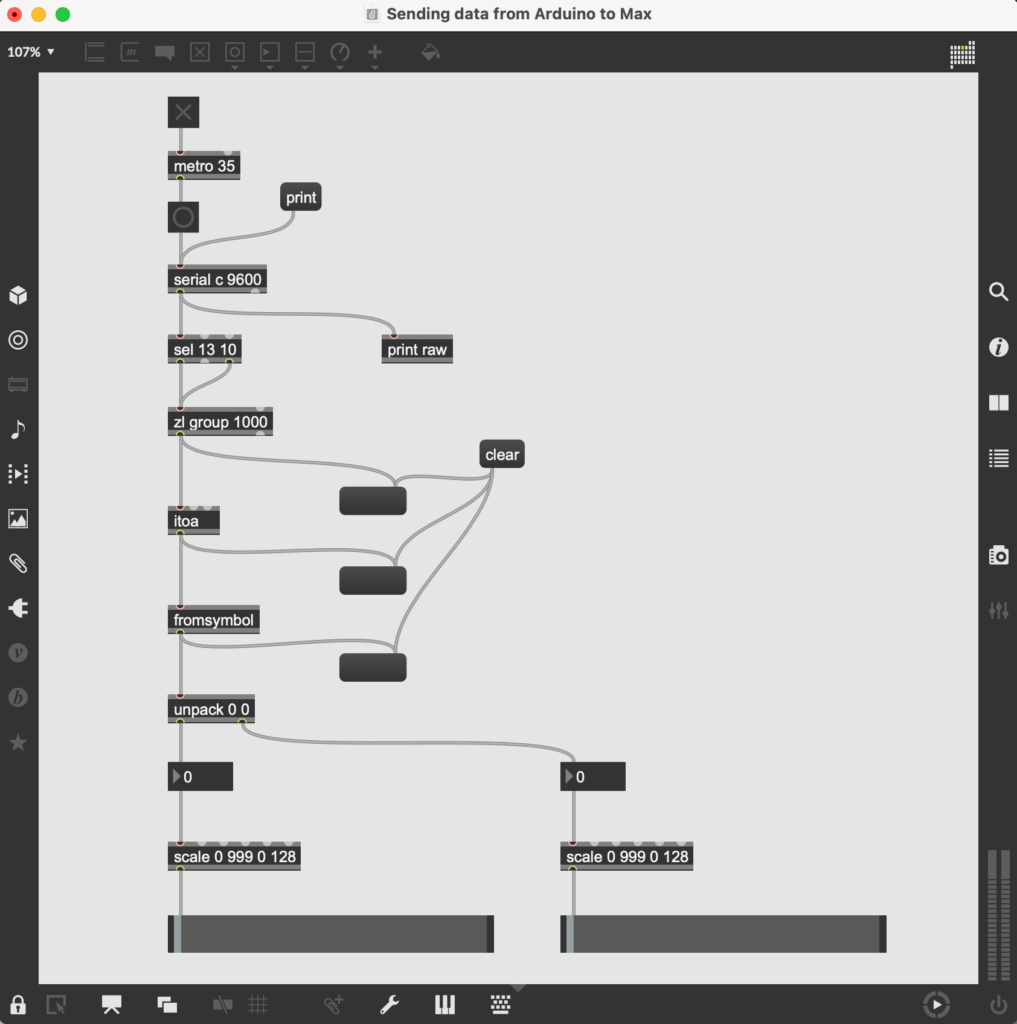This week, I provided a list for our final presentation and thought about what we haven’t done.
Location: Atrium
Setting: 8 speakers (4 on top and 4 on the ground); 1 projector; 1 projection screen
Sensors: 2 light sensors (control colours and patterns); 2 ultrasonic sensors (control sound effects and chords); 1 sound sensor (controls the eq).
Level controller: MIDI keyboard
Arduino: connect to sensors; connect with Max
Max Patch: Jitter (visual); Sound (play random sounds and send the sounds to the speakers)
What we haven’t done:
- Check the equipment availability.
- Check the location availability.
- Sound effects for the final peaceful layer. Add more sound effects if necessary.
- Trim chords and the composition for the rest of the layers.
- Solving the issue of data running.
- Play random sounds in Max.
- Send the sounds to the speakers through Max.
- Set up a main controller to enter different levels.
- Design a head-like shape object to place sensors on it.
